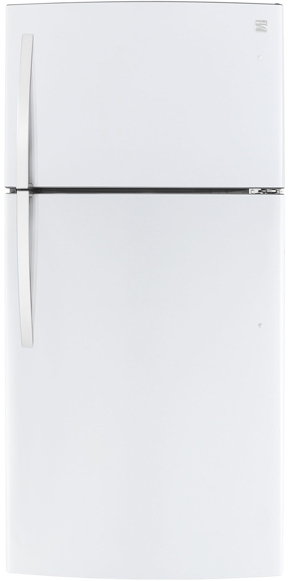Exploding Refrigerators in the News
There was a recent explosion in a University of South Florida Laboratory that made the news. The explosion occurred inside of a refrigerator with such force that the door of a full-sized refrigerator had been blown off and traveled 20 feet through the air across the entire laboratory where it shattered a window. I have not heard what the cause of this explosion was but there is a good chance it was the result of flammable chemicals improperly stored in a household refrigerator.
The storage of flammable materials in a household-type refrigerator,
or a laboratory refrigerator that is not designed
for flammable storage, is risky practice. This is due to the potential
of vaporization of these materials in the closed space
and potential explosion. Explosion of flammable
vapor from a spark
generated by electrical
contacts from relays,
switches, or thermostats
that could ignite
flammable vapors inside
the refrigerator.
While this has not happened
on our campus,
there are many reported
incidents at
other institutions that
have caused injuries
and property damage
from this type of explosion.
Below are photos and descriptions of the 3 types of
refrigerators that can
be found in the laboratory.
1. Ordinary Household Refrigerator.
Household refrigerators like the one shown below
have internal components such as thermostats, relays and
switches. All these components have the capability of generating a spark. If a spark is generated it is capable of igniting
accumulated vapor released from flammable liquids stored inside the refrigerator. This type of refrigerator is the least costly and because
of the lower cost many labs have only this type of
refrigerator. Flammable materials must never be stored in
this type of refrigerator.

2. Flammable Storage Refrigerator
Flammable storage
refrigerators, like the
one seen below are UL approved
for storage of
flammable chemicals.
Flammable storage
refrigerators have no
electrical sparking
devices, relays,
switches, or thermostats
that could ignite
flammable vapors
inside the cabinet.
Flammable storage
refrigerators also may
incorporate design
features such as
thresholds, self-closing doors, magnetic door gaskets, and
special inner shell materials that control or limit the damage
should a reaction occur within the storage compartment.
A label stating “Flammable Materials Refrigerator:
Keep fire away” can identify such refrigerators. The refrigerators
must be U.L. Listed as Flammable Material
Storage Refrigerators.
Flammable storage units cannot be placed in a room containing
explosive vapors but chemicals that exude explosive
vapors can be safely stored inside them. These refrigerators
are also called lab-safe, fire-safe and/or explosion
safe refrigerators. These refrigerators are more costly than
the household refrigerator types but they must be purchased
if you are planning on storing flammables in the
refrigerator.

3. Explosion Proof Refrigerator
Explosion proof refrigerators
like the one seen below are rated UL
explosion-proof and are
similar in design to the
flammable storage units,
but also have all operating
components sealed against
entrance of explosive vapors.
Electrical junction
boxes are also sealed after
connections are made.
These units are approved
for storage of volatile materials
in areas with explosive
atmospheres and are the
most costly of all refrigerator types.
This type of refrigerator is
only required when storing flammable materials in an area
with an explosive atmosphere such as a solvent dispensing
room. Explosion-proof refrigerators have very limited use
on campus and require special hazardous-location wiring
rather than simple cord-and-plug connections. Please contact
Lee Stone, IUPUI Laboratory Safety Manager, at 278-
6150 if you feel you have a need for an explosion proof
refrigerator.
 Since TEMED or Sigmacote are the only flammable materials
stored in the refrigerator for many labs, Sigma was
contacted concerning storage options for these chemicals.
Sigma Corporation representative, Dr. Jeffrey Howard, responded
that storage of both of these materials in the refrigerator
is optimal but it is not necessary. Both of these
chemicals may be stored in a solvent cabinet as long as the
lab is maintained at room temperature without extreme
fluctuations. Dr. Howard states that both chemicals are
stable at room temperature for several months. Due to the
moderately low cost of both of these chemicals, it is recommended
that they be stored at room temperature if there
is no flammable storage refrigerator available. Date the
chemical when received and dispose of it after several months
to insure effective results with its use. Please help keep our campus safe. Identify the type of refrigerators you have and remove any flammable
materials if your refrigerator is the type not approved for the storage of
flammables.
|